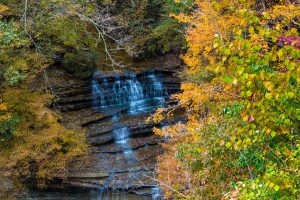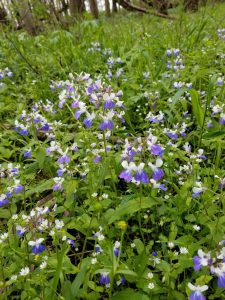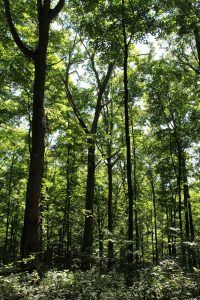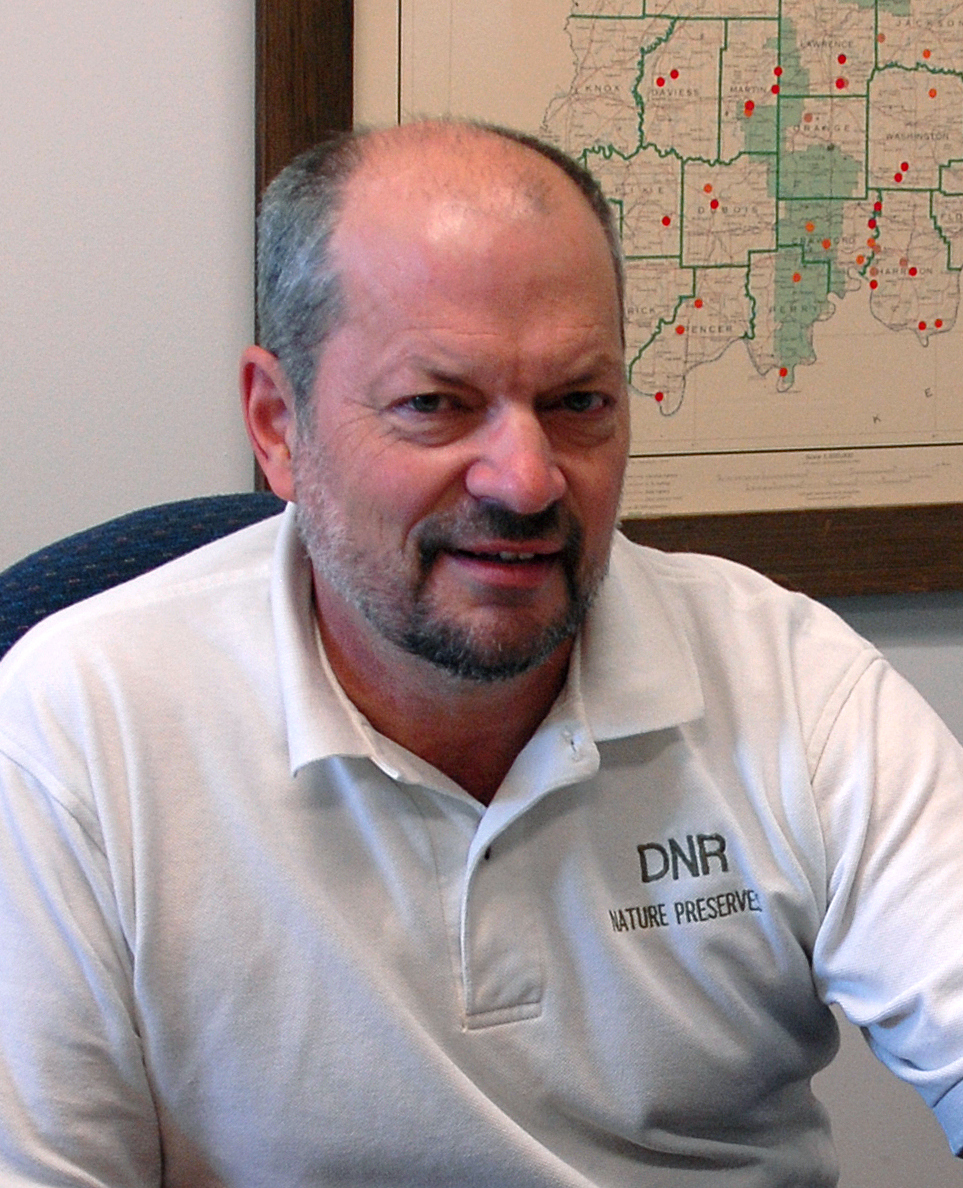Third in a series by board member John Bacone
Note: A version of this series appeared in the Indiana Parks Alliance newsletter and the Indiana Native Plant Society Journal.
Indiana is a place of varied terrain and stunning geologic wonders. Many of our most popular nature preserves are beloved for their geologic features, including Pine Hills (incised meanders), Portland Arch (natural bridge), and Jug Rock (mushroom cap).
Caves have been protected at Buddha Karst NP (Indiana Karst Conservancy) and Cave River Valley (DNR State Parks).

Spectacular sandstone canyons can be observed at many places, including Bluffs of Beaver Bend, Martin County; Portland Arch NP, Fountain County; and Rocky Hollow-Falls Canyon (Turkey Run State Park), where hikers can traverse a glacial boulder train.
Some very fine waterfalls can be observed at Anderson Falls in Bartholemew County, Clifty Canyon NP (Clifty Falls SP), and Hathaway Preserve at Ross Run (ACRES).
Most of Indiana’s old growth forests are dedicated nature preserves. Many are open with trails for hikers, enabling all of us to be awed and inspired. These include:
-

Shrader-Weaver Woods Shrader-Weaver Woods in Fayette County (DNP)
- Meltzer Woods in Shelby County (Central Indiana Land Trust)
- Donaldson Woods (Spring Mill State Park)
- Hemmer Woods in Gibson County (DNP)
- Bendix Woods in St. Joseph County (St. Joseph County Parks Department)
- Bryan Woods in Clinton County (DNP)
- Wesselman Woods (City of Evansville)
In addition to old growth forests, several high-quality forested natural communities have been protected as nature preserves:
- Beanblossom Bottoms, Monroe County (Sycamore Land Trust), protects a large example of a mesic floodplain forest.
- Thousand Acre Woods, Daviess County (TNC), protects a large example of a wet-mesic floodplain forest.
- Saunders Woods, Gibson County (TNC), projects a large expanse of wet floodplain forest.
A number of other nature preserves include significant river frontage as well as smaller examples of these natural community types, such as:

- Russell Bend NP along Sugar Creek in Parke County (DNR Division of Fish and Wildlife)
- Fawn River in LaGrange County (ACRES)
- Thomastown Bottoms along the Muscatatuck in Scott County (DFW, DNP)
- Tippecanoe River NP in Tippecanoe State Park
- Bluffs of Beaver Bend NP in Martin County (DNP), along the White River
Another common type of forested natural community is known as flatwoods. These types of forest occur on level uplands with poorly drained soils. They have been classified into several types depending on their location within Indiana:
- Ambler Flatwoods, LaPorte County, (Heinze) protects an example of boreal flatwoods.
- Section Six Flatwoods (DNP) in Posey County protects Southwestern Lowland Flatwoods.
- TNC has protected an example of a Bluegrass Till Plain Flatwoods, Chelsea Flatwoods NP, in Jefferson County.
Upland forests have been similarly classified based on their topographic location and natural region. Large examples have been protected in many of the larger nature preserves discussed earlier. Other high-quality examples are also found at:
- Green’s Bluff in Owen County (TNC)
- Fourteenmile Creek NP in Charleston SP
- Low Gap NP in Morgan-Monroe State Forest
- Moraine NP in Porter County (DNP)
- Mouth of Blue River NP (O’Bannon State Park)
- Betley Woods at Glacier’s End in Johnson County (Central Indiana Land Trust)
Next up: We continue our virtual tour of Indiana’s best nature preserves to visit.

John Bacone
Secretary